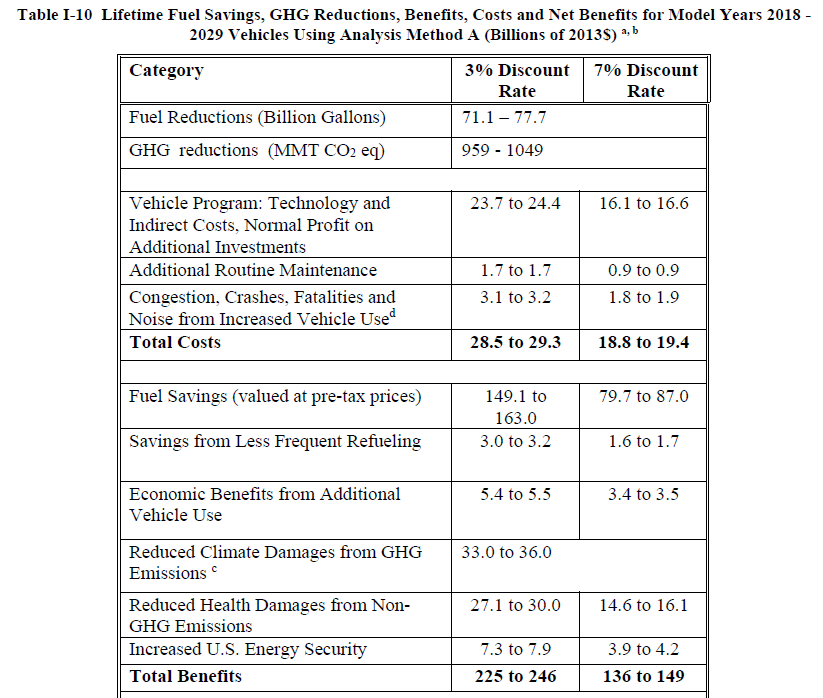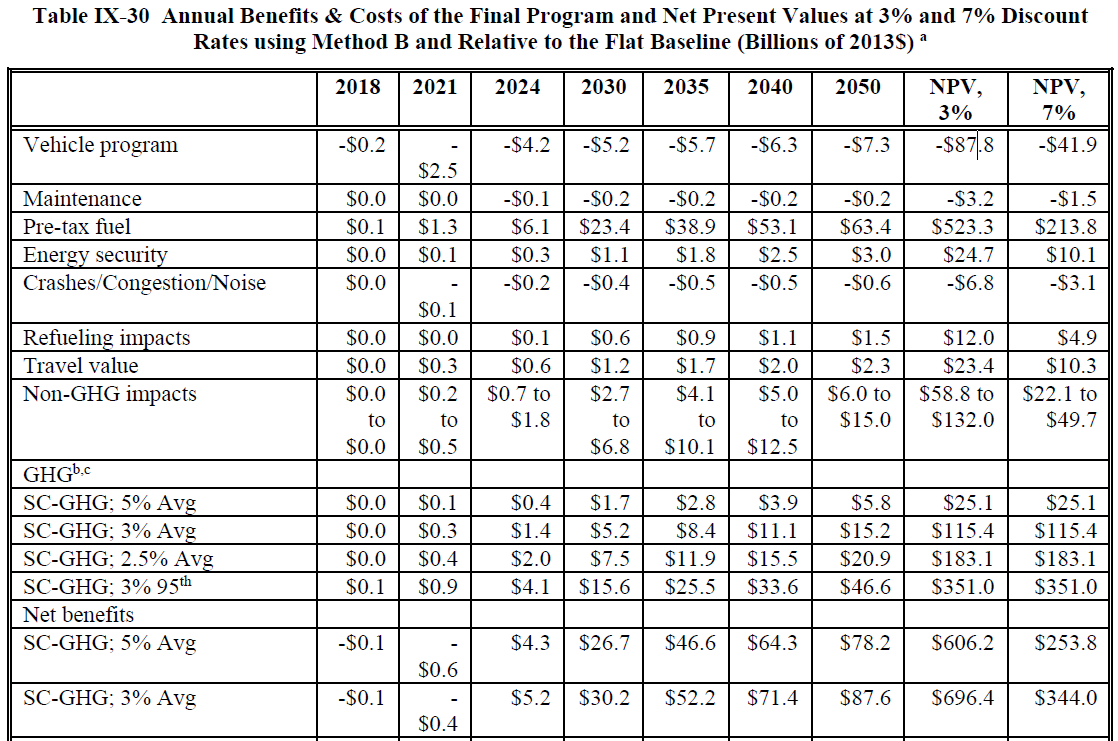Regulation Review
August 22, 2016
Final Phase 2 Heavy-Duty CAFE Standards
The Environmental Protection Agency (EPA) and National Highway Transit Safety Administration (NHTSA) recently released the final version of their Corporate Average Fuel Efficiency (CAFE) standards for medium- and heavy-duty vehicles manufactured from 2018 to 2027. This rule represents the fifth and final set of CAFE standards under the Obama Administration. The cumulative cost of these measures will likely exceed $245 billion. Although it sets different standards for different classes of vehicles, the agencies expect the rule to save roughly 25 percent more in fuel consumption than the previous phase of medium/heavy-duty vehicle standards. The unofficial, pre-publication version of the rulemaking is 1,690 pages.
BREAKDOWN
- Total Cost: $31.1 billion
- Paperwork Burden: 63,250
Final Rule:
- Total Cost: $29.3 billion (NHTSA estimate) $97.8 billion (EPA estimate)
- Paperwork Burden: 61,800 hours
ANALYSIS
The most significant part of this final rule is the substantial rise in potential life-time costs. This estimate is because the two agencies include two different cost-benefit analysis “methods.” Top-line tables of those two methods are included below:
Thus, there is a range of possible estimates. The Method A approach yields life-time costs at a slightly lower level than the proposed version ($29.3 billion); Method B is significantly more expensive, regardless of the discount rate. The benefit figures between the two methods vary widely as well. Depending on the discount rate, the cumulative benefits of Method A range from $136 billion to $246 billion. Method B presents benefits of $404 billion to $830 billion.
Why is there this disparity? Method A takes a more dynamic view of the “baseline,” essentially factoring in the idea that the affected manufacturers are already well on their way to integrating more efficient features in their vehicles. Method B utilizes a “flat” baseline, assuming affected firms are not undertaking these measures, and thus have to make up more ground once the rule is in effect. However, as the rule notes: “NHTSA considered Method A as its central analysis and Method B as a supplemental analysis. EPA considered the results of Method B. The agencies concluded that these methods led the agencies to the same conclusions and the same selection of these standards.”
Assuming, as EPA does, that the Method B top-line costs estimates are valid, this ranks as one of the most expensive rules in recent years. The only rule with greater life-time costs since 2006 would be the 2012 set of CAFE standards for light-duty vehicles, at $156 billion. Even more, it would push the cumulative total of final rule costs since 2006 over $1 trillion (currently at $953 billion). Once this rule is published, the Obama Administration’s rulemaking activity will account for roughly $840 billion of that total.
The “Heavy Duty Truck Manufacturing” industry is a rather consolidated one. Thus, for certain areas of country, the effects could be particularly acute. Apportioning the $97.8 billion in life-time costs to those states with a heavy-duty truck manufacturing presence, the following are the most affected:
|
State |
Cost Share |
|
Ohio |
$11.1 Billion |
|
California |
$7.4 Billion |
|
Florida |
$6.2 Billion |
|
Minnesota |
$5 Billion |
|
Missouri |
$5 Billion |
As significant as the macro-level figures appear, there are also micro-level effects for both firms and consumers. According to the agencies’ own estimates, a typical tractor-trailer combination could see a total cost increase of $7,350 in Model Year (MY) 2021, $11,130 in MY 2024, and $13,550 in MY 2027, as compared to today’s values. Assuming these costs are passed on to consumers, these represent price increases of 6 percent, 9 percent, and 11 percent respectively.
The consumers in this case are not your typical households, but rather companies – namely ground transportation companies. Although these companies may reap benefits from reduced fuel consumption over time, this still represents a significant per-vehicle capital cost for those companies. This could affect firms’ decisions about how and when to replenish their fleet. EPA briefly examines this issue in their Regulatory Impact Analysis (RIA), but does not come to any firm conclusion, noting:
Thus, whether pre-buy or delayed purchase is likely to play a significant role in the truck market depends on the specific behaviors of purchasers in that market. Without additional information about which scenario is more likely to be prevalent, the agencies are not projecting a change in fleet turnover characteristics due to this regulation.
As expected, even from its proposed form, this rulemaking marks one of the most expensive compliance totals yet. It pushes the overall cost total of the current administration’s CAFE rulemakings to at least $245 billion, just exceeding the GDP of Chile. It also stands as the latest – but certainly not the last – addition to the administration’s long list of major regulations.













